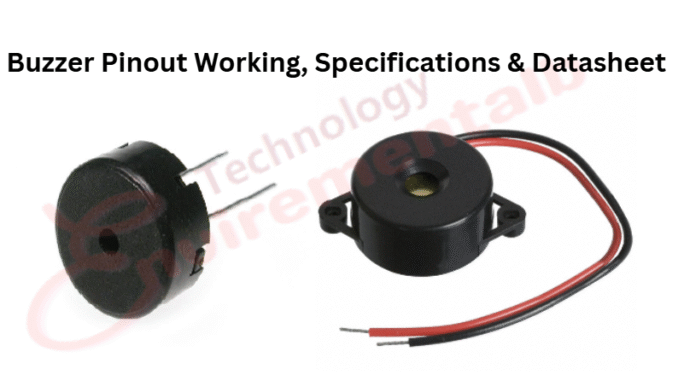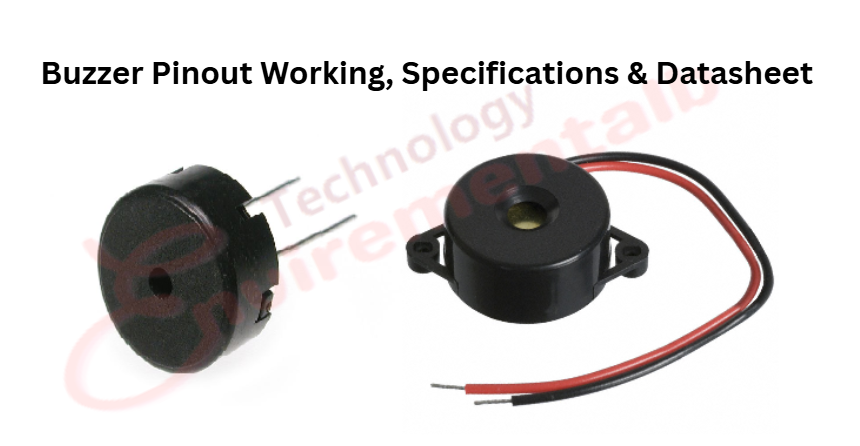
In this article we are going to explain buzzer pinout, working, specifications & datasheet. In simplest terms, a piezo buzzer is an electronic device that produces a tone, alarm, or sound. A piezo buzzer is like a tiny little speaker, but unlike a speaker, it does not require an amplifier or other circuit to drive. When voltage is applied to the piezo, its size grows and shrinks, and a tone is generated.
Pin configurations of Piezo buzzer
| Pin Number | Pin Name | Description |
| 1 | + | recognized by (+) a symbol or taller terminal lead. Can be powered by 6V DC |
| 2 | – | recognized by a short terminal lead. generally connected to the earth of the circuit |
Features of a Piezo buzzer
- Small and neat sealed package
- Rated Voltage: 6V DC
- Operating Voltage: 4-8V DC
- Rated current: <30mA
- Sound Type: Continuous Beep
- Resonant Frequency: ~2300 Hz
- Breadboard and Perf board friendly
Equivalents of Piezo buzzer
Piezo Electric Buzzer, Speaker, Active Passive beeper with Module
How to use a buzzer
A beeper is a small yet efficient component to add sound features to our project/system. It is a very small and compact 2-pin structure; hence, it can be easily used on the breadboard, perf board, and even on PCBs, which makes this a widely used component in most electronic applications.
There are two kinds of buzzers that are generally obtainable. The one shown here is a simple buzzer, which when powered will manufacture a continuous “Beeeeeeppp…” sound. The other kind is called a readymade buzzer that will look bigger than this and will manufacture a “beep.” Beep. Beep. Sound due to the internal oscillating circuit present inside it. But the one looked at here is further widely used since it can be customized with the help of other circuits to fit easily in our application.
grant A simple 9V battery can also be used, but it is recommended to use a regulated +5V or +6V DC supply. It is generally associated with a switching circuit to turn ON or turn OFF the buzzer at the needed time and need interval
Applications:
- Alarming Circuits, where the user has to be alarmed about something
- Portable equipment, due to its compact size
- Automobile electronic
- Communication equipment
Related Posts
- AT24C32 IC Two-Wire Serial EEPROM
- CD4017 IC Pinout, Features, and applications
- LM35 Temperature Sensor pinout
- LM324 IC: Pin Configuration, Circuit working, Features and applications
- LM358 IC Pinout, Description, Equivalents
- LM741 Pin Configuration, Features & Working
- 555 Timer IC: PIN Diagram, Working, Features & Uses

